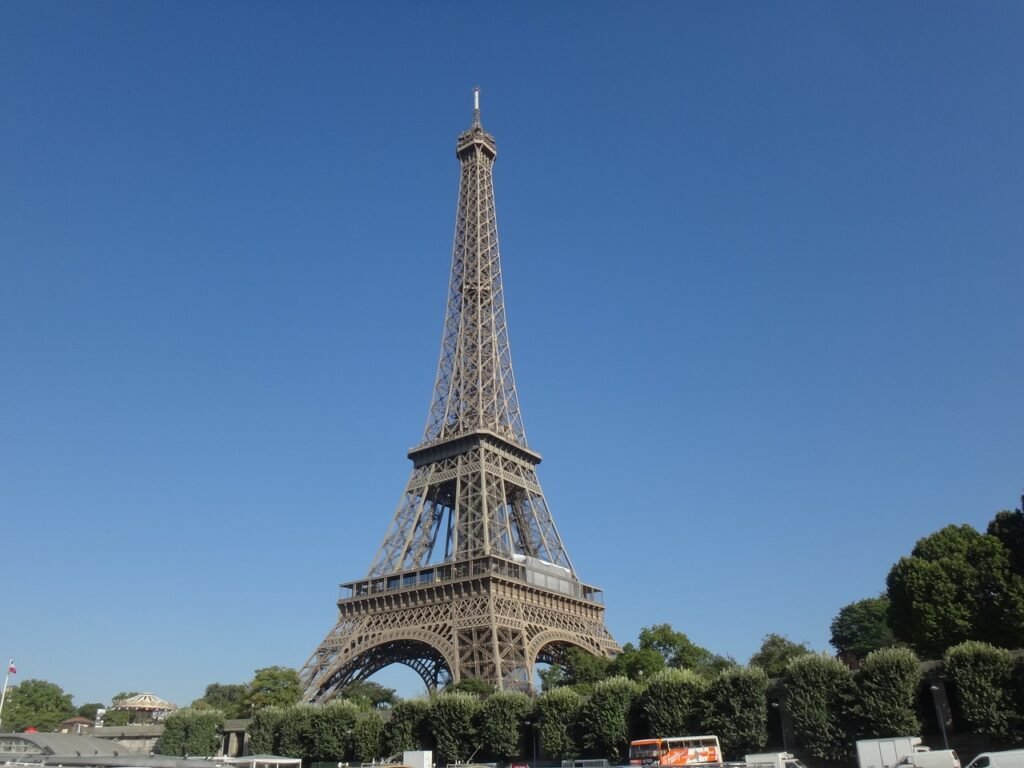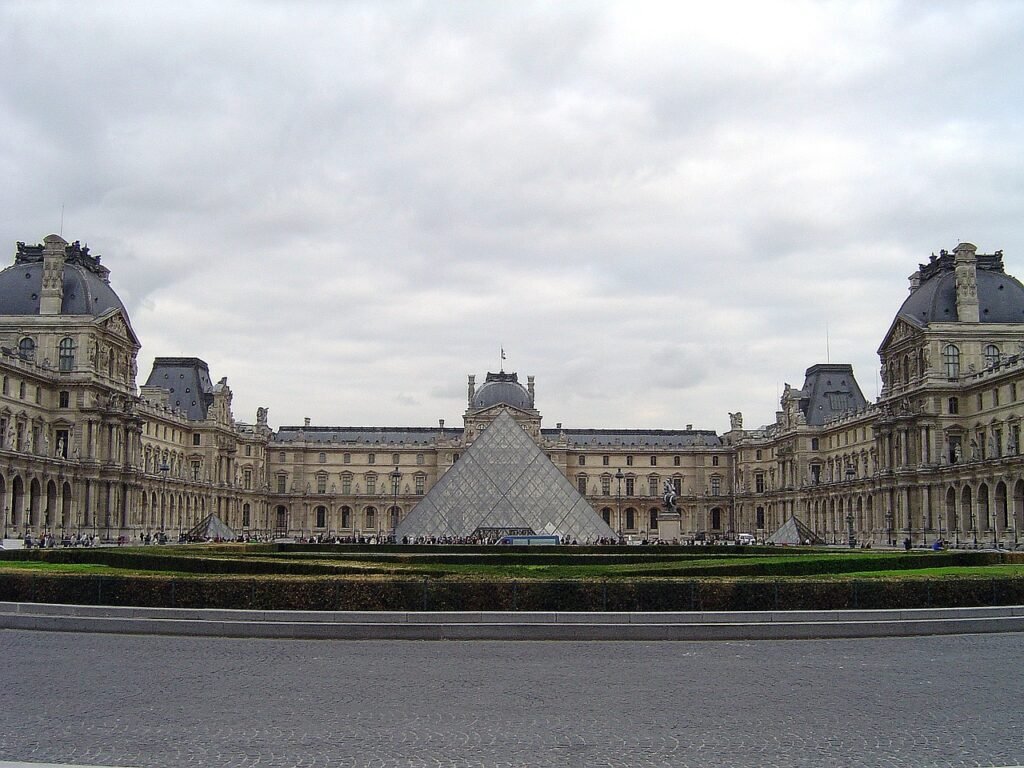A Guide to the City of Light
The Eiffel Tower: A Testament to French Ingenuity

The Eiffel Tower, an iconic structure located on the Champ de Mars in Paris, stands as a remarkable symbol of architectural innovation. Designed by the engineer Gustave Eiffel, the tower was constructed between 1887 and 1889 as part of the 1889 Exposition Universelle, celebrating the 100th anniversary of the French Revolution. Originally met with skepticism, it has since gained worldwide recognition and admiration for its unique iron lattice design, which was revolutionary at the time and has influenced engineering and architecture across the globe.
Standing at a height of 1,083 feet, the Eiffel Tower was the tallest man-made structure in the world until the completion of the Empire State Building in 1931. Its three observation decks offer breathtaking panoramic views of the Parisian skyline, making it one of the most visited monuments in the world. Visitors can experience the beauty of the city from various vantage points—each level presenting a unique perspective of famous landmarks such as the Seine River and the Sacré-Cœur Basilica.
Beyond its architectural significance, the Eiffel Tower embodies the essence of Parisian culture and identity. The tower frequently serves as the backdrop for significant events and celebrations, including the annual Bastille Day fireworks, and it plays a central role in various cultural festivals that showcase French art and history. Additionally, it has been depicted in countless films, literature, and artworks, making it not only a tourist attraction but also a staple of global pop culture.
Ultimately, the Eiffel Tower’s blend of innovation and cultural significance cements its status as a quintessential emblem of Paris, representing the city’s pioneering spirit while providing an unforgettable experience for visitors from around the world.
The Louvre: A Treasure Trove of Art

The Louvre Museum, renowned for its vast collection of art and artifacts, stands as a monumental symbol of Paris and its rich cultural heritage. Originally established as a fortress in the late 12th century, the museum has evolved over centuries, transforming into a premier destination for art lovers worldwide. Its architecture is striking, particularly characterized by the glass pyramid entrance designed by I.M. Pei, which juxtaposes modernity against the historic backdrop of the palace. This fascinating blend exemplifies the museum’s role as a bridge between the past and the present.
Visitors to the Louvre are greeted with an extensive array of artworks spanning various periods and regions. Among its treasures, the Mona Lisa remains a focal point, captivating audiences with her enigmatic smile and masterful technique, honed by Leonardo da Vinci in the early 16th century. This masterpiece is not only significant for its artistry but also for its historical context, which reflects the advancements in portraiture and cultural shifts during the Renaissance. Other notable works include the Venus de Milo, a symbol of ancient beauty, and The Winged Victory of Samothrace, celebrated for its dynamic pose and intricate drapery.
Navigating the expansive gallery can initially seem daunting due to its size and the volume of visitors. To enhance the experience, it is advisable to plan a visit in advance, prioritizing must-see exhibits. The museum’s layout is divided into three wings, and well-signposted itineraries can guide visitors to highlight collections without feelings of overwhelm. Furthermore, timed entry tickets and early morning visits help in managing crowds, allowing explorers to immerse themselves in the allure of art and culture that the Louvre so magnificently encapsulates.
Café Culture: The Heart of Parisian Life
The café culture in Paris serves as a vital aspect of the city’s social fabric, embodying a lifestyle that is simultaneously elegant and informal. These charming establishments provide residents and visitors alike the opportunity to immerse themselves in the bustling atmosphere of Paris. From leisurely mornings spent savoring a café crème to lively afternoons filled with animated conversations, cafés are places where life unfolds, making them essential to the Parisian experience.
People-watching is an inherent pastime in Paris, and cafés offer prime viewing spots. Patrons often sit outdoors, indulging in the ambiance as they observe the parade of Parisians and tourists alike. This leisurely approach to life invites conversations and connections, as the act of sipping coffee becomes intertwined with interaction and observation. Cafés foster a sense of community, drawing together individuals from diverse backgrounds to share thoughts and ideas.
Moreover, the influence of cafés extends beyond social interactions; they have played a significant role in the city’s creative history. Renowned artists, writers, and philosophers have frequented establishments like Café de Flore and Les Deux Magots, where their discussions and musings contributed to the rich tapestry of French literature and art. The very essence of these cafés has been immortalized in various works, highlighting their importance as cultural hubs where creativity thrives.
In addition to their artistic significance, cafés have also made an indelible mark on Parisian fashion. Social gatherings at these venues often inspire trends, with fashion enthusiasts keen to showcase their latest styles while enjoying a cup of coffee. This interplay between fashion and café culture has solidified these establishments as essential settings for personal expression.
In conclusion, the café culture in Paris not only defines the city’s social life but also accentuates its creative and fashionable essence, making it an indispensable component of Parisian identity.
Fashion Scene: A City of Elegance
Paris, often heralded as the fashion capital of the world, serves as a vibrant hub for creativity and elegance, influencing global fashion trends and styles. Renowned for its rich sartorial heritage, the city boasts a unique blend of historical and contemporary fashion that captivates both locals and international visitors. Within its enchanting boulevards and quaint alleys are prominent fashion districts that showcase the essence of Parisian chic, with the iconic Champs-Élysées standing out as a symbol of luxury and sophistication, home to flagship stores of esteemed designers.
In addition to the bustling Champs-Élysées, Le Marais has transformed into a contemporary hotspot characterized by avant-garde boutiques and emerging designers. This district encapsulates the harmonious blend of modern innovation and traditional craftsmanship that defines Parisian fashion. Here, visitors can explore a mix of high-end stores and unique, independent shops, each offering a curated selection of garments, accessories, and artisanal items that reflect the city’s style ethos.
Paris Fashion Week further accentuates the city’s status as a global trendsetter, attracting industry professionals, celebrities, and media from around the world. This biannual event showcases the latest collections from top designers, providing a platform for creativity and artistic expression. It highlights not just the exquisite designs but also the critical role that fashion plays in establishing cultural identity and societal values. For Parisians, fashion is not merely about attire; it is an intrinsic part of their identity, a means of self-expression that intertwines with the city’s rich history.
As we delve into the romance and elegance of Paris’ fashion scene, it becomes evident that the city continues to inspire and innovate, maintaining its revered position at the forefront of fashion and style on a global scale.
